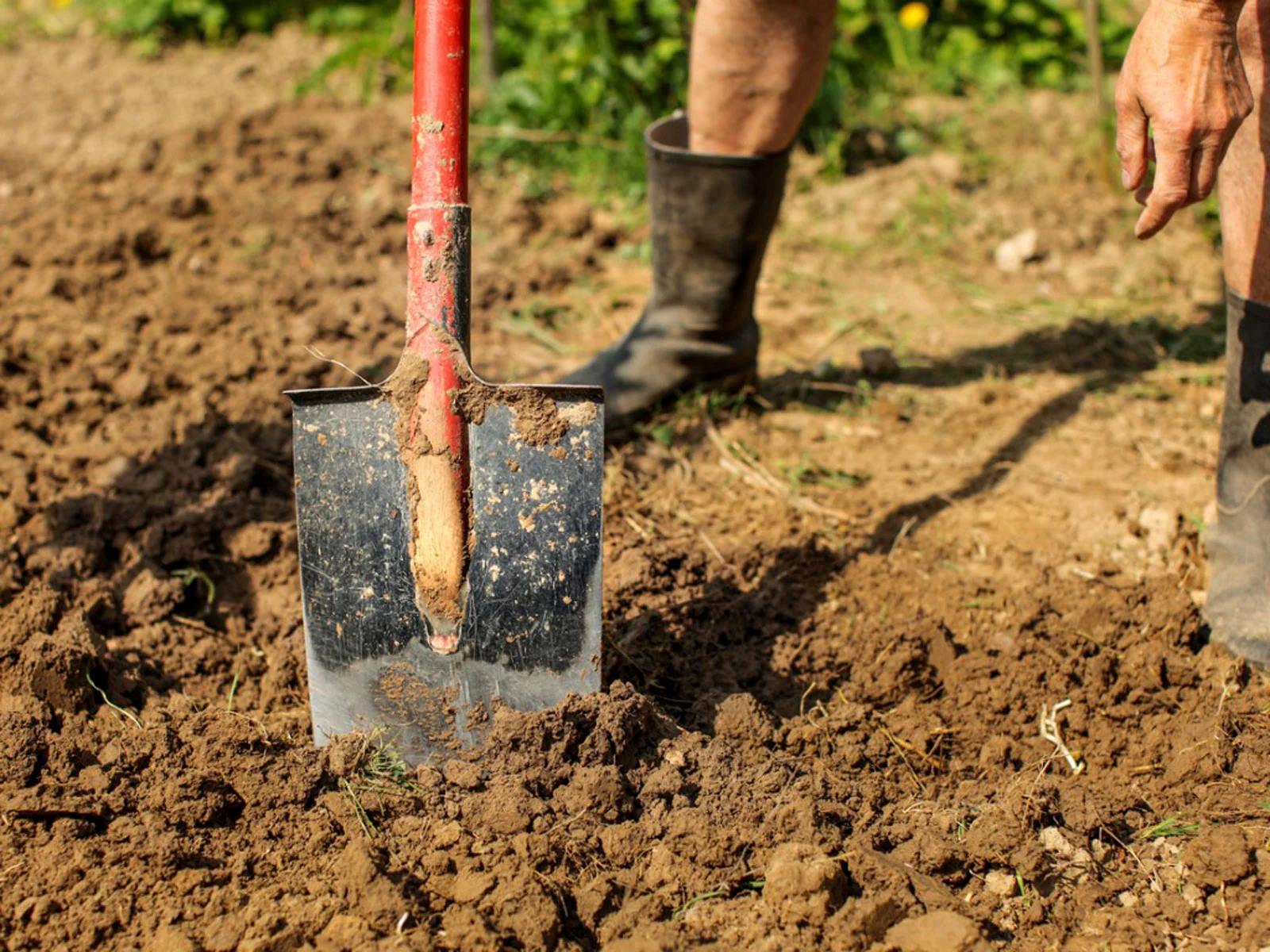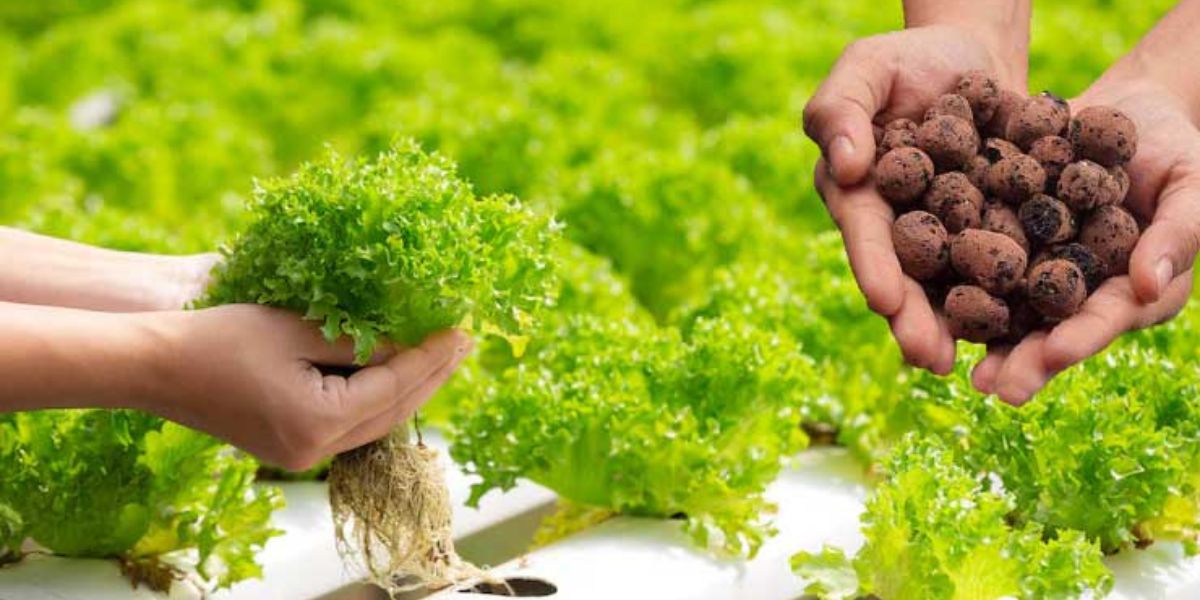Home>Gardening Basics>Understanding Soil>What Is Clay Soil


Understanding Soil
What Is Clay Soil
Published: February 12, 2024
Learn about clay soil and its characteristics. Understand how to work with and improve clay soil for successful gardening and landscaping. Get expert tips and advice on understanding soil.
(Many of the links in this article redirect to a specific reviewed product. Your purchase of these products through affiliate links helps to generate commission for Chicagolandgardening.com, at no extra cost. Learn more)
Table of Contents
Introduction
Clay soil is a common type of soil that is known for its unique properties and characteristics. It is composed of very fine mineral particles and is often found in many parts of the world. Understanding the nature of clay soil is essential for gardeners, farmers, and land developers as it directly impacts the cultivation of crops, construction projects, and landscaping endeavors.
Clay soil has a distinct texture that sets it apart from other soil types. Its fine particles allow it to retain moisture and nutrients, making it fertile ground for certain plants and crops. However, it also presents challenges due to its tendency to compact and become waterlogged, affecting drainage and root development.
In this article, we will delve into the characteristics of clay soil, its advantages and disadvantages, and methods for improving its quality. By gaining a deeper understanding of this soil type, individuals can make informed decisions about how to best utilize and manage clay soil in various applications.
Let's explore the unique world of clay soil and uncover the secrets to harnessing its potential while mitigating its limitations.
Characteristics of Clay Soil
Clay soil exhibits several distinct characteristics that set it apart from other soil types. Understanding these traits is crucial for effectively working with clay soil in agricultural, construction, and landscaping endeavors.
- Particle Size: Clay soil is comprised of very fine particles, smaller than silt or sand. These particles pack tightly together, resulting in a dense and heavy soil texture.
- Water Retention: One of the defining features of clay soil is its exceptional ability to retain water. The tiny particles create a high surface area, allowing the soil to hold onto moisture for extended periods. While this can benefit certain plants, it also poses challenges related to drainage and aeration.
- Compaction: Due to its fine particles, clay soil is prone to compaction, especially when wet. This can lead to reduced porosity and hinder root growth, impacting the overall health of plants and vegetation.
- Fertility: Despite its drawbacks, clay soil is typically rich in essential nutrients. The compact structure helps to trap and hold nutrients, providing a fertile environment for plant growth.
- Color and Texture: Clay soil often has a distinct reddish or brown color, and its texture can range from smooth to slightly gritty, depending on the specific mineral composition.
These characteristics collectively define clay soil and influence its behavior in various applications. By recognizing these traits, individuals can tailor their approach to effectively manage and optimize the use of clay soil for their specific needs.
Advantages of Clay Soil
While clay soil presents unique challenges, it also offers several advantages that make it valuable in certain contexts. Understanding these benefits is essential for harnessing the potential of clay soil in agricultural and landscaping practices.
- Moisture Retention: Clay soil’s ability to retain moisture is a significant advantage, especially in regions with limited rainfall. This characteristic can benefit plants during dry periods by providing a stable water supply.
- Nutrient-Rich: Clay soil is known for its fertility, often containing a wealth of essential nutrients that support robust plant growth. This natural nutrient reservoir can reduce the need for extensive fertilization.
- Support for Certain Crops: Some crops thrive in clay soil due to its moisture retention and nutrient content. Certain fruits, vegetables, and grains can perform exceptionally well in these conditions.
- Structural Stability: In construction and engineering, clay soil’s cohesive nature can provide stability for foundations and structures. Its ability to hold form and resist erosion is advantageous in certain building projects.
- Reduced Erosion: The dense composition of clay soil can help prevent erosion, making it beneficial for landscaping applications where soil stability is crucial.
By recognizing and leveraging these advantages, individuals can capitalize on the unique qualities of clay soil, maximizing its potential in agriculture, construction, and environmental conservation efforts.
Disadvantages of Clay Soil
While clay soil offers certain advantages, it also presents notable disadvantages that can pose challenges for various applications. Understanding these drawbacks is essential for effectively managing and mitigating the limitations of clay soil.
- Drainage Issues: One of the primary disadvantages of clay soil is its poor drainage. The tightly packed particles inhibit water movement, leading to waterlogged conditions that can suffocate plant roots and promote the development of root diseases.
- Compaction: Clay soil is prone to compaction, especially when subjected to heavy foot traffic or machinery. Compaction reduces pore space and restricts the movement of air and water, negatively impacting plant growth and soil health.
- Susceptibility to Cracking: In arid climates, clay soil is prone to drying out and forming deep cracks, which can lead to structural instability and hinder plant establishment.
- Difficulty in Tillage: The dense nature of clay soil makes it challenging to till and work with, requiring significant effort and specialized equipment to achieve proper soil preparation for planting.
- Delayed Warming in Spring: Clay soil tends to retain cold temperatures longer into the spring season, which can delay planting and affect the early growth of heat-sensitive crops.
By acknowledging and addressing these disadvantages, individuals can implement targeted strategies to improve the performance of clay soil in agricultural, horticultural, and construction endeavors.
Improving Clay Soil
Addressing the challenges associated with clay soil involves implementing targeted techniques to enhance its structure, drainage, and overall usability. By employing effective soil improvement strategies, individuals can transform the limitations of clay soil into opportunities for successful cultivation and construction.
- Organic Matter Addition: Incorporating organic matter, such as compost, well-rotted manure, or leaf mold, into clay soil can improve its structure and drainage. Organic materials enhance soil aggregation, increasing porosity and promoting better root penetration.
- Avoiding Compaction: Minimizing soil compaction through the use of raised beds or designated walkways can preserve the natural structure of clay soil and prevent the detrimental effects of compression.
- Amending with Gypsum: Gypsum can be applied to clay soil to help break up compacted layers and improve drainage. This mineral amendment facilitates the flocculation of clay particles, reducing their tendency to bind together tightly.
- Utilizing Cover Crops: Planting cover crops, such as legumes and grasses, can help mitigate the challenges of clay soil by enhancing its organic content, reducing erosion, and improving soil tilth.
- Implementing Raised Beds: Constructing raised beds filled with well-draining soil can provide an alternative growing environment, particularly for vegetables and ornamental plants that may struggle in compacted clay soil.
By employing these methods and customizing approaches based on specific needs and environmental conditions, individuals can effectively enhance the quality and performance of clay soil, unlocking its potential for successful cultivation, landscaping, and construction projects.
Conclusion
Clay soil, with its unique characteristics and inherent advantages and disadvantages, plays a significant role in various agricultural, construction, and environmental settings. While its ability to retain moisture and nutrients can benefit certain crops and provide stability in construction projects, the challenges of poor drainage, compaction, and susceptibility to cracking require thoughtful management and improvement strategies.
By understanding the distinct properties of clay soil and implementing targeted methods for enhancement, individuals can effectively harness its potential and mitigate its limitations. Techniques such as organic matter addition, gypsum application, and the use of cover crops offer practical solutions for improving the structure and performance of clay soil.
Ultimately, recognizing the value of clay soil and employing informed approaches to address its drawbacks can lead to successful cultivation, sustainable land use, and durable construction practices. Embracing the complexities of clay soil and leveraging its unique attributes empowers individuals to work in harmony with this soil type, unlocking its capacity to support thriving plant life and enduring structures.
By embracing the complexities of clay soil and leveraging its unique attributes, individuals can work in harmony with this soil type, unlocking its capacity to support thriving plant life and enduring structures.




